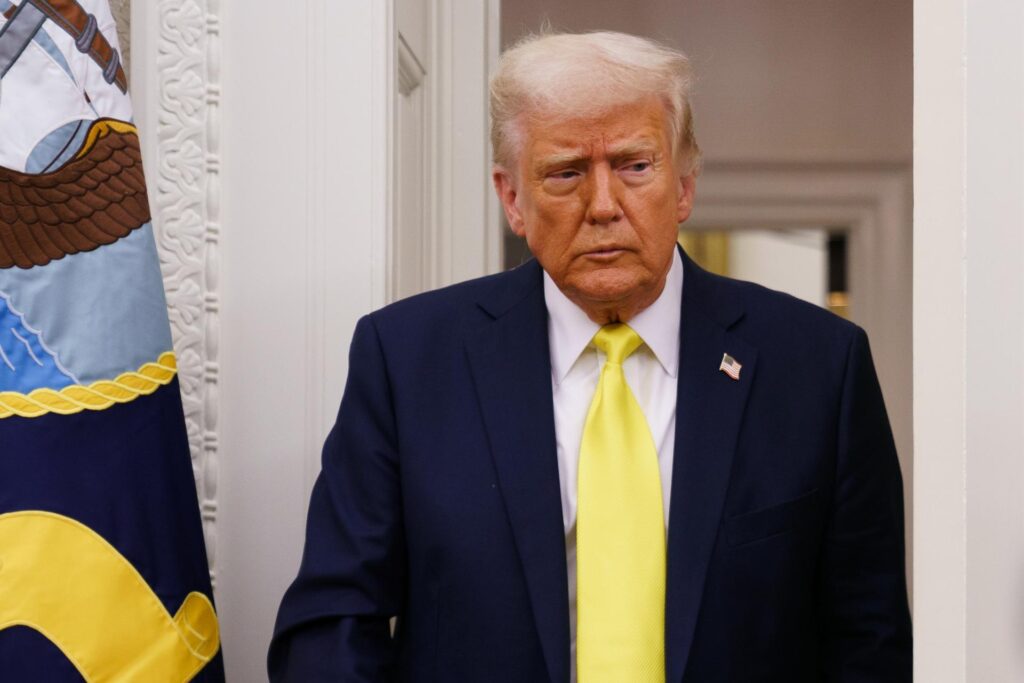Introduction
In the complex arena of global diplomacy, few nations attract as much scrutiny as the United States and China. As tensions escalate over trade agreements, cybersecurity issues, and geopolitical dominance, analysts are increasingly questioning which side will make concessions first. Recent events indicate that former President Donald Trump, known for his aggressive policies, might be the one to yield. This article delves into the shifting dynamics of U.S.-China relations by examining economic pressures, domestic political factors, and strategic adjustments that could lead Trump to rethink his position amidst the intricate web of international trade and power struggles. With stakes at an all-time high, one must ask: will Trump ultimately back down first? What would this mean for both countries and the wider global community?
Analyzing Economic Pressures and Their Influence on China Policy
The Trump administration is currently grappling with a range of economic challenges that are increasingly influencing its policy towards China. The combination of a sluggish domestic economy alongside rising concerns about trade deficits has prompted a reevaluation of Trump’s previously hardline approach toward Beijing. Recent studies suggest that maintaining high tariffs could result in significant domestic repercussions as living costs rise and U.S.-based manufacturers face increasing difficulties. Businesses caught in this dilemma are advocating for a more moderate strategy; they argue that ongoing economic distress may force Trump to temper his rhetoric. This perspective is echoed across several key sectors:
- Manufacturers report declining profits due to increased operational costs stemming from tariffs.
- Consumers voice dissatisfaction over escalating prices linked to import duties.
- Agricultural producers encounter export hurdles exacerbated by retaliatory tariffs from other nations.
Apart from immediate economic metrics, broader geopolitical factors are likely to influence Trump’s decision-making regarding China. Ongoing disputes related to technology transfers and intellectual property rights disadvantage American companies while also risking alienation from potential regional allies eager for economic partnerships. As Trump navigates these multifaceted issues, there exists a plausible opportunity for improved relations—especially if key economic indicators begin trending downward. Important metrics guiding this evolving landscape include:
| Indicator | Current Status | Potential Impact |
|---|---|---|
| Unemployment Rate | 5.3% | An increase may prompt leniency in trade policies. |
| Consumer Price Index (CPI) | 2.1% | CPI rises could necessitate negotiations. |
Domestic Political Factors Influencing Trump’s Trade Approach
The realm of domestic politics significantly shapes Trump’s stance on trade matters concerning China as midterm elections draw near; he faces mounting pressure to deliver results appealing to critical voter demographics such as those in manufacturing or agriculture sectors affected by current policies.
The stakes have never been higher since many constituents have directly felt the consequences stemming from tariffs leading them towards growing discontentment with existing strategies.
In light of these circumstances,a blend of political pragmatism coupled with efforts aimed at rallying support through portraying strength against perceived adversaries drives Trump’s strategy forward.
Additionally,the administration has shown flexibility in its messaging based on changing public sentiment; key elements influencing this shift include:
- Impact Of The Trade War: Ongoing tariffs risk alienating suburban/rural voters’ backing.
- Economic Indicators: Rising unemployment rates or downturns might necessitate adopting conciliatory measures instead.
- Political Allies’ Concerns: Pressure mounts from Republican lawmakers worried about backlash among vital voting blocs if conditions worsen further ahead!
This intricate relationship between domestic politics & (Trump’s) trade policy illustrates how while he may adopt an aggressive posture initially seeking short-term gains—looming electoral pressures could ultimately compel him toward compromise aimed at retaining support among essential voter groups!.
Strategic Guidelines For U.S.-China Relations In The Future
Navigating their complicated relationship requires policymakers within both countries adopting comprehensive strategies addressing not only economic but also geopolitical challenges effectively moving forward! Primarily focus should shift towards fostering constructive engagement rather than isolationist tendencies which can include:
- Trade Negotiations : Reinvigorate discussions surrounding imbalances promoting equitable trading environments .< / li >
- Collaboration On Global Issues : Partnering together tackling shared concerns like climate change , pandemics , regional stability .< / li >
- Cultural Exchange Initiatives : Encouraging people-to-people interactions enhancing mutual understanding reducing tensions overall .< / li > ul >
Additionally enhancing military communication channels becomes crucial preventing miscalculations potentially escalating conflicts unnecessarily !< br /> p >
Key Areas Of Focus th > U.S Initiatives th > China’s Response th > tr > < b >Trade Relations : b > td > < b >Introduce Tariffs Cautiously : b > td > < b >Offer Concessions On Exports : b > td > tr > < b >Security Cooperation : b > td > < b Expand Military Dialogues : / // ///////// / / / / / / / / / ////////// // // // // // // // ///////////////////// /// /// /// /// /// * Engagement understanding strategic communication remain essential steering future US-China relations towards stable cooperative paths ahead!
Conclusion
As tensions persist between United States & ;& ;& ;& ;> ;China navigating complexities involved will play pivotal roles determining outcomes within relationships established thus far ! Donald Trumps presidency characterized confrontational approaches directed against Beijing however prevailing realities along with mounting political pressures may push him reconsider positions taken previously ! With upcoming negotiations looming alongside approaching elections questions arise whether former president prioritizes de-escalation securing legacies left behind versus continuing confrontational stances adopted earlier ? Experts suggest dynamics surrounding chess game unfolding here lead critical moments where decisions made impact not just bilateral ties but entire global economies shaping futures yet unseen…
